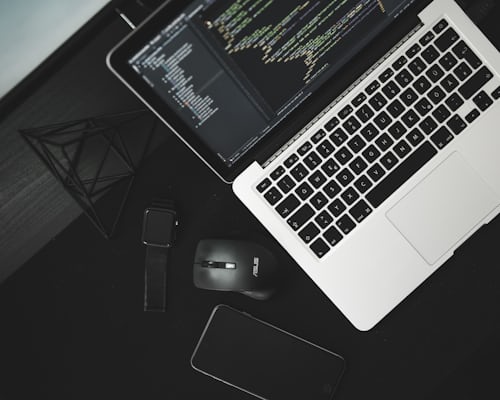Looking for the best ways to optimize your Ionic Angular app performance in 2022?
Creating a feature-rich, functional, and high-performance app is the key to attracting and retaining customers in this fiercely competitive market.
But building such an app is easier said than done, especially when you consider the bugs and glitches that need to be fixed.
Furthermore, you may have heard people complain about how hybrid apps, which are built on frameworks such as Ionic and Angular, cannot compete or keep up with native apps in terms of performance.
In truth, such performance issues are rarely caused by the underlying framework, and they are often the result of development mistakes and oversights that you can avoid by following certain measures.
When companies hire angular developers, they expect apps that are well-optimized for performance, which is why having a few smart tricks up your sleeve is so important.
Table of Contents
Effective Ways to Optimize Ionic Angular App Performance
Both Ionic and Angular released updates in July of 2022. Angular version 14.1.0 and Ionic version 6.2.0 seek to offer some major improvements over their older versions to help you create better apps.
Besides following the industry best practices during development, you can take several steps to further improve performance. Many of the steps that we will discuss here were recommended by ace Angular developer Stephen Fluin at a web.dev conference talk.
You can follow these Ionic Angular optimization tips when creating apps for the web, Android or iOS. Let’s dig in!
Audit Bundle Size Using Source-Map-Explorer
Contemporary web apps, especially those built on Ionic Angular, are generally modified multiple times before they are released on a web browser.
Developers combine and then minify JavaScript files or occasionally machine-generate them. They also use the source-map-explorer tool to debug the app or review its bundle size.
This tool helps you visualize the app’s code distribution, which makes it easy to examine and identify the gaps left between the code you originally wrote and the one that was sent to the end-user.
To use the source-map-explorer tool, all you need to do is:
Install the source-map-explorer tool.
Open “angular.json” in the project, and locate the “configurations” node. After that, you need to set the options called “sourceMap” and “namedChunks” to “true.”
Next, you need to create a production build of the app:
Finally, you need to run the source-map-explorer tool after specifying the JavaScript file that you want to analyze.
In Ionic apps, this file begins with “main” along with a continuously changing hash such as “main-es2015.5e93717f1.js” that you will find under the “www” folder.
Make sure to run the following command to inspect both the modern browsers and the legacy browsers bundles:
By running this command, you can open up a visualization of the app’s code distribution including the codes you have written and the libraries you have used.
Start by inspecting the frameworks and libraries you have included for the unused code because it can creep in later if someone accidentally checks in a prototype.
Next, you need to review the application code, and a common issue that often pops up in this stage is related to unnecessary imports. You need to remove the unnecessary import and rerun the source-map-explorer analysis. You may notice a huge drop in the bundle size now.
Lastly, you need to audit “package.json” and look for unused libraries, which you need to remove to further reduce the bundle size.
Define Size budgets
The source-map-explorer tool is not only useful for analyzing and reducing bundle size, but it can also be used for configuring size budgets.
Once your app is in production, reducing its size can be extremely challenging. That is why setting the budget threshold is crucial for ensuring that the app stays within the well-defined size boundaries.
Make sure to run this command to set the size budgets within the budget section of angular.json:
Since every application is different, the recommended size budgets can vary. In the example above, you can see that if the app’s initial size goes beyond 500kb, the Angular CLI will display a console warning during development. If the file size is bigger than 800kb, the current build will fail.
Experiment with Angular Lazy Loading
Lazy loading refers to the Angular technique that lets you load JavaScript components asynchronously whenever a specific route is activated. Modules load on demand in lazy loading when users navigate to their route for the first time.
Lazy loading makes the application load faster by splitting it into several bundles. When a user navigates through the application, each bundle is loaded as and when required. It reduces the initial bundle size and improves the overall performance of the app.
To create a lazy loaded module, you need to use the following command:
Ionic Angular apps have lazy loading enabled out of the box, and new Ionic apps have lazy loading pre-configured. In such a case, any subsequent page that is created using the “generate” command of Ionic CLI will be automatically configured as a lazy loaded module.
Keep Up with “ng updates”
One of the most important rules of optimizing an Ionic Angular app is to keep Angular up-to-date, but the truth is that no one likes to update their dependencies. That is mostly because the risk of something going wrong after the update is high.
Thankfully, the Angular team has done a fantastic job with the Angular CLI’s update process by allowing you to update the Angular packages and apply code transformation as you need. The Angular team suggests you update the CLI and core first:
You can update the rest of the packages after this if you don’t face any errors. You can check out the update guide on Angular’s official website to get further assistance.
You can also update the Ionic dependencies of your application by using this command:
Add a Browser List File to Reduce Build Time
“Browserlist” files specify the browsers that the app supports. You can use this information in various ways. For instance, you can optimize Ionic Angular app building process and reduce app built time by adding Browserlist file.
If your app is built on a really old version of Angular, such as Angular 7, you may not have a browserlist file, but you should consider adding one.
To get the latest browserlist configuration, you need to run “ng new” outside of the main app project to create a new temporary Angular project. You need to then copy the browserlist file into the existing project.
To get a list of all the supported browsers in the browserlist file, you need to run “npx browserlist” in the root project’s directory. Here’s what running the command looks like:
Wrapping Up
Optimizing an Ionic Angular app performance may seem daunting and complicated, but Angular’s out-of-the-box toolkit, which lets you configure size budgets, implement lazy loading, and add browserlist file, makes this job easy and hassle-free. You can effectively optimize your Ionic Angular app by following the 5 tips mentioned above.
You should also regularly update your app and use source-map-explorer occasionally to identify the areas that you can further optimize to make your app more performant.





